D. Winterbone FEng BSc PhD DSc FIMechE MSAE034067699X, 9780340676998, 047023718X, 9780470237182
Table of contents :
@TEAM LIB……Page 1
Preface……Page 4
Structure of book……Page 8
Symbols……Page 9
Contents……Page 14
1 State of Equilibrium……Page 18
1.1 Equilibrium of a thermodynamic system……Page 19
1.2 Helmholtz energy (Helmholtz function)……Page 22
1.4 The use and significance of the Helmholtz and Gibbs energies……Page 23
1.4.2 GIBBS ENERGY……Page 24
1.4.3 THERMODYNAMICS EXAMPLES OF DIFFERENT FORMS OF EQUILJBRIUM MET IN THERMODYNAMICS……Page 25
1.5 Concluding remarks……Page 26
PROBLEMS……Page 27
2.1 Displacement work……Page 30
2.2 Availability……Page 31
2.3 Examples……Page 32
2.5 Irreversibility……Page 38
2.6 Graphical representation of available energy, and irreversibility……Page 42
2.7 Availability balance for a closed system……Page 44
2.8 Availability balance for an open system……Page 51
2.9 Exergy……Page 53
2.9.1 HEAT TRANSFER……Page 54
2.9.2 EXERGY APPLIED TO COMBUSTION PROCESS……Page 57
2.10 The variation of flow exergy for a perfect gas……Page 59
PROBLEMS……Page 60
3 Pinch Technology……Page 64
3.1 A heat transfer network without a pinch problem……Page 66
3.2 A heat transfer network with a pinch point……Page 73
3.3 Concluding remarks……Page 77
PROBLEMS……Page 78
4.1 The influence of fuel properties on thermal efficiency……Page 81
4.2 Rational efficiency……Page 82
4.3 Rankine cycle……Page 86
4.4 Examples……Page 88
PROBLEMS……Page 99
5.1 maximum power output Efficiency of an internally reversible heat engine when producing maximum power output……Page 102
5.2 Efficiency of combined cycle internally reversible heat engines when producing maximum power output……Page 109
PROBLEMS……Page 113
6.1 The Maxwell relationships……Page 117
6.1.1 GRAPHICAL-. INTERPRETATION OF MAXWELL RELATIONS……Page 120
6.2 Uses of the thermodynamic relationships……Page 121
6.3 Tds relationships……Page 125
6.4 Relationships between specific heat capacities……Page 128
6.5 The Clausius-Clapeyron equation……Page 132
6.5.1 THE USE OF THE CLAUSIUS-CLAPEYRON EQUATION……Page 134
PROBLEMS……Page 135
7.1 Ideal gas law……Page 138
7.2 Van der Waals’ equation of state……Page 140
7.3 Law of corresponding states……Page 142
PROBLEMS……Page 146
7.5 Concluding remarks……Page 148
8.1 Liquefaction by cooling – method (i)……Page 152
8.2 Liquefaction by expansion – method (ii)……Page 157
8.3 The Joule-Thomson effect……Page 158
8.3.1 MAXIMUM AND MINIMUM IWERSION TEMPERATURES……Page 162
8.4 Linde liquefaction plant……Page 165
8.5 Inversion point on p-v-Tsurface for water……Page 167
PROBLEMS……Page 172
9.1 Molecular weights……Page 175
9.2 State equation for ideal gases……Page 176
9.2.1 IDEAL GAS EQUATION……Page 177
9.2.2 THE SIGNIFICANCE OF Uom AND hom……Page 178
9.2.3 ENTROPY OF AN IDEAL GAS – THIRD LAW OF THERMODYNAMICS……Page 179
9.2.4 THE GIBBS ENERGY (FUNCTION) OF AN IDEAL GAS……Page 180
9.3 Tables of u ( T ) and h ( T ) against T……Page 181
9.3.1 TABLES OF MEAN SPECIFIC HEAT……Page 188
9.4.3 MIXTURE RELATIONSHIPS……Page 189
9.5 Entropy of mixtures……Page 192
PROBLEMS……Page 195
10 Thermodynamics of Combustion……Page 199
10.1.1 FUELS……Page 201
10.2 Combustion of simple hydrocarbon fuels……Page 202
10.2.3 COMBUSTION WITH RICH MIXTURES……Page 203
10.3 Heats of formation and heats of reaction……Page 204
10.4.2 HE.4TS OF REACTION AND FORMATION……Page 205
10.4.3 HEAT OF FORMATION – HESS’ LAW……Page 207
10.51 ADIABATIC COMBUSTION……Page 209
10.5.2 COMBUSTION WITH HEAT AND WORK TRANSFER……Page 211
10.6 Examples……Page 212
PROBLEMS……Page 222
11.1 Bond energies and heats of formation……Page 225
11.2 Energy of formation……Page 227
11.4 Concluding remarks……Page 233
12.1 Gibbs energy……Page 235
12.2 Chemical potential, u……Page 237
12.3 Stoichiometry……Page 238
12.4 Dissociation……Page 239
12.4.1 WEAK MIXTURE WITH DISSOCIATION……Page 240
12.4.3 GENERAL HYDROCARBON REACTION WITH DISSOCIATION……Page 241
12.5 Calculation of chemical equilibrium and the law of mass action……Page 242
12.6 Variation of Gibbs energy with composition……Page 246
12.8 The Wan’t Hoff relationship between equilibrium constant and heat of reaction……Page 255
12.7.1 EXAMPLEI……Page 248
12.7.2 EXAMPLE 2……Page 249
12.7.3 EXAMPLE I : A ONE DEGREE OF DISSOCIATION EXAMPLE……Page 250
12.9.1 The effect of pressure……Page 256
12.9.2 THE EFFECT OF TEMPERATURE……Page 258
12.10 Dissociation calculations for the evaluation of nitric oxide……Page 259
12.11.1 EXAMPLE 4: COMBUSTION OF A TYPICAL HYDROCARBON FUEL……Page 262
12.11.2 EXAMPLE 5: A RICH MIXTURE……Page 269
12.11.3 EXAMPLE 6: THE FORMATION OF NITRIC OXIDE……Page 271
PROBLEMS……Page 276
13 Effect of Dissociation on Combustion Parameters……Page 282
13.2 The basic reactions……Page 284
13.4 The effect of dissociation on peak temperature……Page 285
13.5 The effect of dissociation on the composition of the products……Page 286
13.6 The effect of fuel on composition of the products……Page 289
13.7 The formation of oxides of nitrogen……Page 290
14.2 Reaction rates……Page 293
14.3 Rate constant for reaction, k……Page 296
14.4 Chemical kinetics of NO……Page 297
14.5.2 SULFUR DIOXIDE (SO,) EMISSIONS……Page 303
14.5.4 GREENHOUSE EFFECT……Page 304
14.6 Other methods of producing power from hydrocarbon fuels……Page 305
PROBLEMS……Page 306
15.1 Introduction……Page 308
15.2 Thermodynamics of combustion……Page 309
15.2.1 REACTION ORDER……Page 310
15.3 Explosion limits……Page 311
15.3.1 EXPLODE THE EFFECT OF MULTIPLICATION FACTOR ON THE TENDENCY TO EXPLODE……Page 312
15.4.1 PREMIXED FLAMES……Page 313
15.4.2 LAMINAR FLAME SPEED……Page 314
15.4.3 TURBULENT FLAME SPEED……Page 319
15.5 Flammability limits……Page 320
15.6 Ignition……Page 321
15.7 Diffusion flames……Page 322
15.8.1 SPARK-IGNITION ENGINES……Page 324
15.8.2 DIESEL ENGINES……Page 326
15.8.3 GAS TURBINES……Page 329
PROBLEMS……Page 331
16.1 Introduction……Page 333
16.3 Entropy flow and entropy production……Page 334
16.4 Thermodynamic forces and thermodynamic velocities……Page 335
16.5 Onsager’s reciprocal relation……Page 336
16.6 The calculation of entropy production or entropy flow……Page 338
16.7.1 THERMOELECTRIC PHENOMENA……Page 339
16.7.2 UNCOUPLED EFFECTS IN THERMOELECTRICITY……Page 340
16.7.3 THE COUPLED EQUATIONS OF THERMOELECTRICITY……Page 341
16.7.4 THE THERMOCOUPLE……Page 343
16.7.5 OTHER EFFECTS IN THERMOCOUPLES……Page 346
16.8.1 BASIC PHENOMENA INVOLVED……Page 349
16.8.2 DEFINING THE FORCES AND FLUXES……Page 350
16.8.3 THE UNCOUPLED EQUATIONS OF DIFFUSION……Page 352
PROBLEMS……Page 359
17 Fuel Cells……Page 362
17.1 Electric cells……Page 363
17.1.1 ELECTROCHEMICAL. POTENTIAL……Page 366
17.1.2 THERMODYNAMIC ORIGIN OF EMF……Page 367
17.2 Fuel cells……Page 368
17.2.1 EXAMPLE: A HYDROGEN-OXYGEN FUEL CELL……Page 370
17.2.3 EXAMPLES……Page 372
17.3 Efficiency of a fuel cell……Page 375
17.4 Thermodynamics of cells working in steady state……Page 376
PROBLEMS……Page 378
Bibliography……Page 380
Index……Page 385


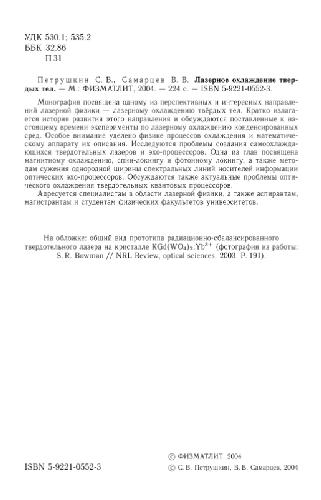
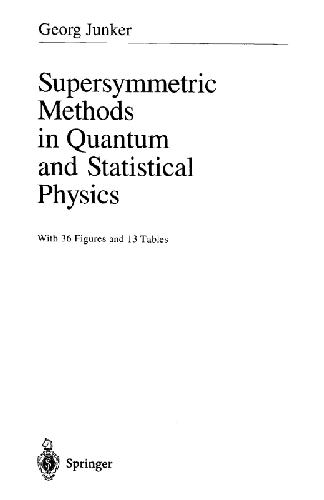
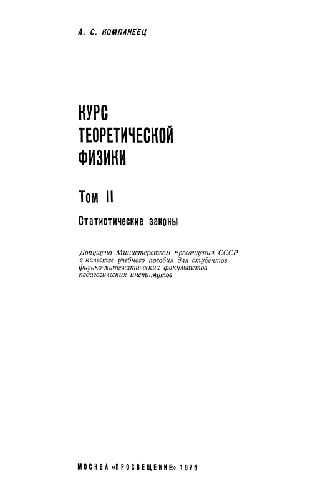
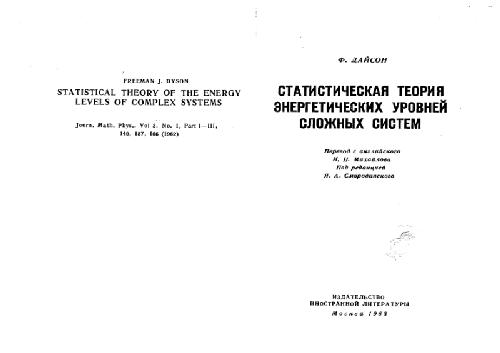
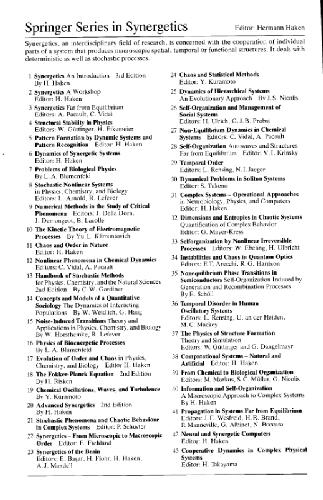
Reviews
There are no reviews yet.